Table of Contents
- Introduction
- History and Development
- Composition and Properties
- Chemical Composition
- Physical Properties
- Mechanical Properties
- Tempers of 6061 Aluminum Alloy
- Temper Designations
- Detailed Properties by Temper
- Production and Processing
- Extrusion
- Rolling
- Forging
- Heat Treatment
- Cold and Hot Stamping
- Castings
- Applications
- Aerospace
- Automotive
- Construction
- Consumer Electronics
- Comparison with Other Alloys
- 6061 vs 6063
- 6061 vs 7075
- 6061 vs 2024
- Welding
- Techniques
- Effects on Properties
- Filler Materials
- Advantages and Disadvantages
- Advantages
- Disadvantages
- Future Trends and Research
- Conclusion
- References
1. Introduction
6061 aluminum alloy is one of the most versatile and widely used aluminum alloys. It is renowned for its excellent mechanical properties, including good weldability, corrosion resistance, and high strength-to-weight ratio. This alloy is a workhorse in numerous industries, from aerospace to consumer electronics, due to its adaptability and performance.
2. History and Development
The development of 6061 aluminum alloy can be traced back to the early 20th century when researchers were experimenting with various aluminum-magnesium-silicon (Al-Mg-Si) combinations to create stronger and more durable materials. The alloy was officially registered in 1935 and has since undergone numerous improvements to enhance its properties and expand its applications.
3. Composition and Properties
Chemical Composition
6061 aluminum alloy primarily consists of aluminum, magnesium, and silicon, with other elements present in smaller quantities. The typical composition is as follows:
| Element | Composition (%) |
|---|---|
| Aluminum (Al) | 95.8 – 98.6 |
| Magnesium (Mg) | 0.8 – 1.2 |
| Silicon (Si) | 0.4 – 0.8 |
| Iron (Fe) | 0.0 – 0.7 |
| Copper (Cu) | 0.15 – 0.4 |
| Chromium (Cr) | 0.04 – 0.35 |
| Zinc (Zn) | 0.0 – 0.25 |
| Titanium (Ti) | 0.0 – 0.15 |
| Manganese (Mn) | 0.0 – 0.15 |
| Other elements | 0.05 (each) |
| Other elements | 0.15 (total) |
Physical Properties
The physical properties of 6061 aluminum alloy include its density, melting point, and thermal conductivity. These properties make it suitable for a wide range of applications.
| Property | Value |
|---|---|
| Density | 2.70 g/cm³ |
| Melting Point | 582 – 652°C |
| Thermal Conductivity | 167 W/m·K |
| Electrical Conductivity | 40% IACS |
Mechanical Properties
6061 aluminum alloy is known for its high strength and good mechanical performance, which are critical for engineering applications.
| Property | Value |
|---|---|
| Ultimate Tensile Strength | 310 MPa |
| Yield Strength | 276 MPa |
| Modulus of Elasticity | 68.9 GPa |
| Poisson’s Ratio | 0.33 |
| Elongation at Break | 12% |
4. Tempers of 6061 Aluminum Alloy
Temper Designations
6061 aluminum alloy can be heat-treated to produce various tempers, each with distinct mechanical properties. The most common tempers are:
| Temper | Description |
|---|---|
| 6061-O | Annealed, lowest strength |
| 6061-T1 | Cooled from an elevated temperature shaping process and naturally aged |
| 6061-T4 | Solution heat-treated and naturally aged |
| 6061-T5 | Cooled from an elevated temperature shaping process and artificially aged |
| 6061-T6 | Solution heat-treated and artificially aged |
| 6061-T9 | Solution heat-treated, artificially aged, and cold worked |
| 6061-T651 | Solution heat-treated, stress-relieved by stretching, then artificially aged |
Detailed Properties by Temper
The mechanical properties of 6061 aluminum alloy vary significantly depending on the temper. Below is a detailed table comparing the properties of different tempers.
| Property | 6061-O | 6061-T1 | 6061-T4 | 6061-T5 | 6061-T6 | 6061-T9 | 6061-T651 |
|---|---|---|---|---|---|---|---|
| Ultimate Tensile Strength (MPa) | 124 | 180 | 207 | 241 | 310 | 317 | 310 |
| Yield Strength (MPa) | 55 | 83 | 110 | 145 | 276 | 280 | 276 |
| Elongation at Break (%) | 25 | 17 | 17 | 12 | 12 | 12 | 12 |
| Hardness (Brinell) | 30 | 55 | 60 | 75 | 95 | 100 | 95 |
5. Production and Processing
Extrusion
Extrusion is a common process used to shape 6061 aluminum alloy into various forms, such as rods, tubes, and profiles. This process involves forcing the aluminum through a die to create long shapes with consistent cross-sections.
| Step | Description |
|---|---|
| 1 | Preheat the billet to approximately 400-500°C |
| 2 | Place the billet into the extrusion press |
| 3 | Force the billet through the die using a ram |
| 4 | Cool the extruded profile using air or water |
| 5 | Stretch the profile to straighten and relieve internal stresses |
| 6 | Cut the profile to the desired length |
Rolling
Rolling is another crucial process for 6061 aluminum, used to create sheets and plates. The aluminum is passed through rollers to achieve the desired thickness and surface finish.
| Step | Description |
|---|---|
| 1 | Preheat the ingot to approximately 400-500°C |
| 2 | Pass the ingot through a series of rollers to reduce thickness |
| 3 | Anneal the rolled sheets to relieve internal stresses |
| 4 | Cold roll the sheets for final thickness and surface finish |
| 5 | Cut the sheets to the desired dimensions |
Forging
Forging involves shaping the aluminum under high pressure, which enhances its mechanical properties. This process is often used for creating components that require high strength and durability.
| Step | Description |
|---|---|
| 1 | Preheat the billet to approximately 400-500°C |
| 2 | Place the billet into the forging die |
| 3 | Apply high pressure to shape the billet |
| 4 | Cool the forged part using air or water |
| 5 | Perform post-forging heat treatment to enhance properties |
Heat Treatment
Heat treatment is essential for optimizing the mechanical properties of 6061 aluminum alloy. The T6 temper, involving solution heat treatment followed by artificial aging, is one of the most common heat treatments for this alloy.
| Step | Description |
|---|---|
| 1 | Solution heat treatment at 530-550°C |
| 2 | Quench in water |
| 3 | Natural aging at room temperature (T4 temper) |
| 4 | Artificial aging at 160-180°C for 8-10 hours (T6 temper) |
Cold and Hot Stamping
6061 sheet in the T4 condition can be formed with limited ductility in the cold state. For deep draw and complex shapes, and for the avoidance of spring-back, an aluminum hot stamping process (Hot Form Quench) can be used, which forms a blank at an elevated temperature (~550°C) in a cooled die, leaving a part in W-temper condition before artificial aging to the T6 full strength state.
| Process | Description |
|---|---|
| Cold Stamping | Forming at room temperature, limited ductility |
| Hot Stamping | Forming at ~550°C in cooled die, better for deep draw and complex shapes |
Castings
6061 is not an alloy that is traditionally cast due to its low silicon content affecting the fluidity in casting. It can be suitably cast using a specialized centrifugal casting method. Centrifugally cast 6061 is ideal for larger rings and sleeve applications that exceed the limitations of most wrought offerings.
| Method | Description |
|---|---|
| Centrifugal Casting | Suitable for large rings and sleeves, improved mechanical properties |
6. Applications
Aerospace
6061 aluminum alloy is extensively used in the aerospace industry due to its high strength-to-weight ratio and good corrosion resistance. It is used for aircraft fittings, couplings, and structural components.
| Application | Description |
|---|---|
| Aircraft Fittings | High strength, lightweight |
| Couplings | Corrosion resistance, durability |
| Structural Components | Good mechanical properties |
Automotive
In the automotive sector, 6061 aluminum is used for making various components such as frames, wheels, and drive shafts. Its high strength and lightweight properties help improve fuel efficiency and performance.
| Application | Description |
|---|---|
| Frames | Lightweight, high strength |
| Wheels | Corrosion resistance, durability |
| Drive Shafts | High strength, lightweight |
Construction
6061 aluminum is also used in the construction industry for structural components, roofing, and window frames. Its corrosion resistance and ease of fabrication make it an ideal choice for building materials.
| Application | Description |
|---|---|
| Structural Components | High strength, corrosion resistance |
| Roofing | Lightweight, durable |
| Window Frames | Corrosion resistance, ease of fabrication |
Consumer Electronics
6061 aluminum is used in consumer electronics for making casings and heat sinks. Its thermal conductivity and aesthetic appeal make it a popular choice for electronic device manufacturers.
| Application | Description |
|---|---|
| Casings | Aesthetic appeal, lightweight |
| Heat Sinks | Thermal conductivity, durability |
7. Comparison with Other Alloys
6061 vs 6063
6061 and 6063 are both Al-Mg-Si alloys, but they have different properties and applications. 6061 is stronger and used in structural applications, while 6063 is more formable and used in architectural applications.
| Property | 6061 | 6063 |
|---|---|---|
| Ultimate Tensile Strength (MPa) | 310 | 210 |
| Yield Strength (MPa) | 276 | 160 |
| Elongation at Break (%) | 12 | 18 |
| Applications | Structural | Architectural |
6061 vs 7075
7075 aluminum alloy is stronger than 6061 and is used in aerospace applications requiring high strength. However, 6061 has better corrosion resistance and is more weldable.
| Property | 6061 | 7075 |
|---|---|---|
| Ultimate Tensile Strength (MPa) | 310 | 572 |
| Yield Strength (MPa) | 276 | 503 |
| Elongation at Break (%) | 12 | 11 |
| Corrosion Resistance | Better | Lower |
| Weldability | Better | Lower |
6061 vs 2024
2024 aluminum alloy has higher strength than 6061 but lower corrosion resistance and weldability. It is often used in aerospace applications.
| Property | 6061 | 2024 |
|---|---|---|
| Ultimate Tensile Strength (MPa) | 310 | 470 |
| Yield Strength (MPa) | 276 | 324 |
| Elongation at Break (%) | 12 | 10 |
| Corrosion Resistance | Better | Lower |
| Weldability | Better | Lower |
8. Welding
Techniques
6061 aluminum alloy is highly weldable using tungsten inert gas (TIG) welding or metal inert gas (MIG) welding. These techniques provide good joint strength and quality.
| Technique | Description |
|---|---|
| TIG Welding | Uses a tungsten electrode and inert gas |
| MIG Welding | Uses a consumable wire electrode and inert gas |
Effects on Properties
Welding can affect the mechanical properties of 6061 aluminum alloy. Typically, the properties near the weld are those of 6061-T4, leading to a loss of strength of around 40%. However, the material can be re-heat-treated to restore near-T6 temper for the whole piece.
| Property | Pre-Weld | Post-Weld (T4) |
|---|---|---|
| Ultimate Tensile Strength (MPa) | 310 | 207 |
| Yield Strength (MPa) | 276 | 110 |
| Elongation at Break (%) | 12 | 17 |
Filler Materials
Common filler materials for welding 6061 aluminum include 4043 and 5356. These fillers help maintain the weld’s strength and corrosion resistance.
| Filler Material | Description |
|---|---|
| 4043 | Good crack resistance, used for general purposes |
| 5356 | Higher strength, used for structural applications |
9. Advantages and Disadvantages
Advantages
6061 aluminum alloy offers several advantages, making it a popular choice in various industries.
| Advantage | Description |
|---|---|
| High Strength-to-Weight Ratio | Ideal for aerospace and automotive applications |
| Good Corrosion Resistance | Suitable for outdoor and marine environments |
| Excellent Weldability | Easy to join using TIG or MIG welding |
| Versatile Temper Options | Can be heat-treated to achieve various properties |
| Good Machinability | Easy to machine, reducing manufacturing costs |
Disadvantages
Despite its many advantages, 6061 aluminum alloy has some limitations.
| Disadvantage | Description |
|---|---|
| Lower Strength than Some Alloys | Not as strong as 7075 or 2024 alloys |
| Requires Heat Treatment for Optimal Properties | Additional processing steps needed |
| Reduced Strength Near Welds | Requires re-heat treatment after welding for full strength |
| Not Ideal for Casting | Low silicon content affects fluidity in casting |
10. Future Trends and Research
Research on 6061 aluminum alloy is ongoing, focusing on enhancing its properties and developing new applications. Advances in processing techniques and alloy modifications are expected to further improve its performance in various industries.
Current Research Areas
| Area | Description |
|---|---|
| Additive Manufacturing | Exploring 3D printing techniques for complex shapes |
| Surface Treatments | Developing coatings to enhance corrosion resistance |
| Alloy Modifications | Experimenting with new compositions for better properties |
| Advanced Welding Techniques | Improving weld quality and joint strength |
Future Applications
| Application | Description |
|---|---|
| Electric Vehicles | Lightweight components to improve efficiency |
| Renewable Energy | Structural components for solar and wind energy systems |
| Aerospace Innovations | Advanced materials for next-generation aircraft |
11. Conclusion
6061 aluminum alloy is a highly versatile and widely used material in various industries due to its excellent mechanical properties and adaptability. Ongoing research and development continue to expand its applications, making it a crucial material for future technological advancements.
12. References
- Davis, J. R. (1993). Aluminum and Aluminum Alloys. ASM International.
- Hatch, J. E. (1984). Aluminum: Properties and Physical Metallurgy. ASM International.
- Polmear, I. J. (2006). Light Alloys: Metallurgy of the Light Metals. Butterworth-Heinemann.
- Starke, E. A., & Staley, J. T. (1996). Application of Modern Aluminum Alloys to Aircraft. Progress in Aerospace Sciences.
- Lumley, R. N. (2011). Fundamentals of Aluminium Metallurgy: Production, Processing and Applications. Woodhead Publishing.
- Kumar, S. S., & Balasubramanian, V. (2008). Developing a Mathematical Model to Evaluate Tensile Strength of Friction Stir Welded AA6061 Aluminum Alloy. Journal of Materials Engineering and Performance.
- Miller, W. S., et al. (2000). Recent Development in Aluminium Alloys for the Automotive Industry. Materials Science and Engineering: A.
- Totten, G. E. (2001). Handbook of Aluminum: Volume 1: Physical Metallurgy and Processes. CRC Press.
- Kaufman, J. G. (2000). Introduction to Aluminum Alloys and Tempers. ASM International.
- Prasad, N. E., & Gokhale, A. A. (2008). Aluminium Alloys: The Physical and Mechanical Properties. Alpha Science International.
- Polmear, I. J. (1995). Light Alloys. Arnold.
- Anderson, K. L., & Mannan, S. K. (2003). Optimization of the Heat Treatment Process for 6061-T6 Aluminum Alloy. Journal of Heat Treatment and Materials.
- Mohamed, F. A. (2008). High-Temperature Deformation of 6061 Aluminum Alloy. Acta Materialia.
- Hirsch, J., & Skrotzki, B. (2013). Aluminum Alloys for Automotive Applications. Materials Science and Engineering: A.
- King, J. F. (1999). Aluminum Extrusion Technology. ASM International.
- Vasudevan, A. K., & Doherty, R. D. (1987). Aluminium Alloys–Contemporary Research and Applications. Academic Press.
- Hatch, J. E. (1987). Aluminum: Properties and Physical Metallurgy. ASM International.
- Srivatsan, T. S., & Lam, P. C. (1995). Processing and Fabrication of Advanced Materials for High-Performance Applications. ASM International.
- Myhr, O. R., Grong, Ø., & Fjær, H. G. (1998). Modelling of the Age Hardening Behaviour of Al–Mg–Si Alloys. Materials Science and Engineering: A.
- Meek, T. T., et al. (2006). Influence of Welding Parameters on Friction Stir Welding of 6061 Aluminum Alloy. Welding Journal.
- Yang, X., & Li, J. (2009). Microstructure and Mechanical Properties of Friction Stir Welded 6061 Aluminum Alloy. Materials Science and Engineering: A.
- Cram, D. G., et al. (2009). Structure and Properties of Centrifugally Cast 6061 Aluminum Alloy. Journal of Materials Processing Technology.
- Jackson, M. J., & Ahmed, W. (2007). Surface Engineering of Light Alloys: Aluminum, Magnesium and Titanium Alloys. Elsevier.
- Apelian, D., et al. (2006). Casting of Aluminium Alloys. ASM International.
- Callister, W. D. (2007). Materials Science and Engineering: An Introduction. Wiley.
- Reed-Hill, R. E., & Abbaschian, R. (1991). Physical Metallurgy Principles. PWS-Kent.

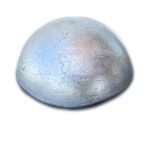
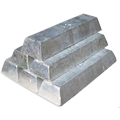
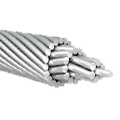
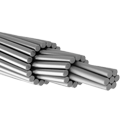
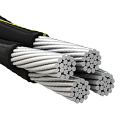
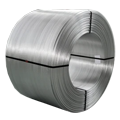
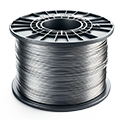








No comment